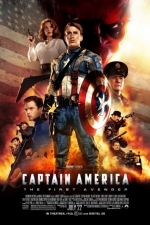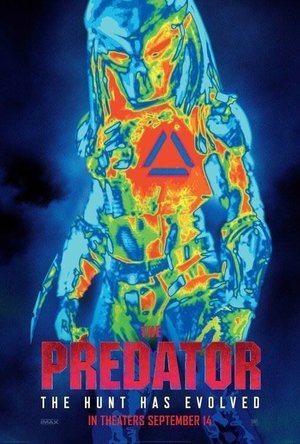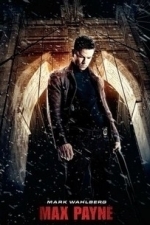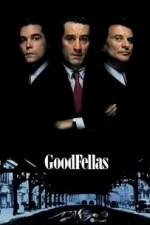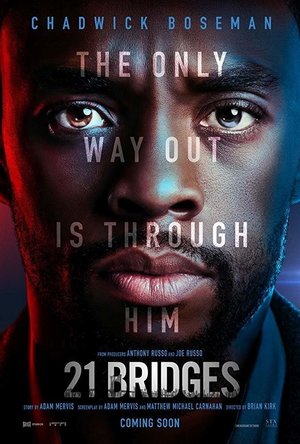Search
Search results
Ryan Hill (152 KP) rated Captain America: The First Avenger (2011) in Movies
May 9, 2019
"i'm just a kid from brooklyn"
"I'm just a kid from Brooklyn"
A rip-roaring homage to old fashioned serials and comic books. Joe Johnston somehow pulls off the tone and look, firmly planting me into the 1940's time period. As fantastical as it is I still feel the real world within the picture.
Protagonist Steve Rogers makes for an easily likable guy who at the start is a smaller guy, who stands up to bullies even if it means getting his ass beat. His dream is to serve his country and although not meeting physical requirements for the army, he proves the heart and courage to become the specimen of a super soldier syrum. With this experiment, Steve's size, strength and conditioning is greatly enhanced and becomes the face of WW2 propaganda. His desire to fight however gets him involved with the battle against a division of the Nazi's known as Hydra, headed by Johann Schmidt, the "Red Skull".
Red Skull is one of the best villians of the Marvel cinematic universe. I couldn't imagine him played by anyone other than Hugo Weaving who brings such gravitas and personality to the role. Red Skull is an experiment of the soldier syrum himself which gives him a certain connection to Rogers, but chooses to use his power for the service of himself and his evil desires. The film includes the element of Nazi fascination with science and experimentation, taking it a step further. Red Skull discovers other worldly magic, the Tesseract of Asgard, which he utilizes for the use of weaponry. Thus, blending historical events with an exciting dose of imagination. A Nazi more powerful than Hitler? That's pretty scary.
The action comes swift and mighty, combining the fleshy violence of war with creative comic book thrills. It's some of the most entertaining action I've ever seen. I love that the presence of Hitler can be felt even though he is not on screen. It seamlessly connects the future with the past, makes the looming threat of the entire world felt, and contains elements of other Marvel films past and present that only adds to the movie and never detracts. Tony Stark's father has a direct influence on Captain America which adds a layer to the proceeding films. Thor and Loki's place in future events are tied in perfectly. Steve's friendship with Bucky and presumed death is one of the emotional cores to the film that also plays into the sequels. Unbelievable.
Can I just mention the charming romance between Peggy and Steve Rogers? It's so natural and plays out over the duration of the film without anything ridiculous. When Peggy tears up as Steve is speeding toward the unkown in a downed plane, I lose it. I lose it every time. They never got that last dance and my heart is broken.
When Red Skull calls Steve a "simpleton with a shield" I'm like YES!! that's why I love him. I could be Steve Rogers. I could be Captain America. Well, not really, but he's one of the most relatable on screen super heroes. I'd even say he's the one I can see myself in the most. Consider me #TeamCap.
I must make mention of the wonderful musical score and songs written for the film. Very important piece to the puzzle. I listen to "Star Spangled Man" just about every time I take a walk. The costumes and production design deserve all the love in the world as well. Tommy Lee Jones is great and makes me laugh as usual. All performances are great. Points for finding a use for Captain America's vintage comic book costume and re-enacting the punch to Hitler's face from Captain America issue #1.
Who taught Cap how to fight like that though? Guess that's one of the perks of the syrum too.
A rip-roaring homage to old fashioned serials and comic books. Joe Johnston somehow pulls off the tone and look, firmly planting me into the 1940's time period. As fantastical as it is I still feel the real world within the picture.
Protagonist Steve Rogers makes for an easily likable guy who at the start is a smaller guy, who stands up to bullies even if it means getting his ass beat. His dream is to serve his country and although not meeting physical requirements for the army, he proves the heart and courage to become the specimen of a super soldier syrum. With this experiment, Steve's size, strength and conditioning is greatly enhanced and becomes the face of WW2 propaganda. His desire to fight however gets him involved with the battle against a division of the Nazi's known as Hydra, headed by Johann Schmidt, the "Red Skull".
Red Skull is one of the best villians of the Marvel cinematic universe. I couldn't imagine him played by anyone other than Hugo Weaving who brings such gravitas and personality to the role. Red Skull is an experiment of the soldier syrum himself which gives him a certain connection to Rogers, but chooses to use his power for the service of himself and his evil desires. The film includes the element of Nazi fascination with science and experimentation, taking it a step further. Red Skull discovers other worldly magic, the Tesseract of Asgard, which he utilizes for the use of weaponry. Thus, blending historical events with an exciting dose of imagination. A Nazi more powerful than Hitler? That's pretty scary.
The action comes swift and mighty, combining the fleshy violence of war with creative comic book thrills. It's some of the most entertaining action I've ever seen. I love that the presence of Hitler can be felt even though he is not on screen. It seamlessly connects the future with the past, makes the looming threat of the entire world felt, and contains elements of other Marvel films past and present that only adds to the movie and never detracts. Tony Stark's father has a direct influence on Captain America which adds a layer to the proceeding films. Thor and Loki's place in future events are tied in perfectly. Steve's friendship with Bucky and presumed death is one of the emotional cores to the film that also plays into the sequels. Unbelievable.
Can I just mention the charming romance between Peggy and Steve Rogers? It's so natural and plays out over the duration of the film without anything ridiculous. When Peggy tears up as Steve is speeding toward the unkown in a downed plane, I lose it. I lose it every time. They never got that last dance and my heart is broken.
When Red Skull calls Steve a "simpleton with a shield" I'm like YES!! that's why I love him. I could be Steve Rogers. I could be Captain America. Well, not really, but he's one of the most relatable on screen super heroes. I'd even say he's the one I can see myself in the most. Consider me #TeamCap.
I must make mention of the wonderful musical score and songs written for the film. Very important piece to the puzzle. I listen to "Star Spangled Man" just about every time I take a walk. The costumes and production design deserve all the love in the world as well. Tommy Lee Jones is great and makes me laugh as usual. All performances are great. Points for finding a use for Captain America's vintage comic book costume and re-enacting the punch to Hitler's face from Captain America issue #1.
Who taught Cap how to fight like that though? Guess that's one of the perks of the syrum too.
Hazel (1853 KP) rated As I Descended in Books
Dec 17, 2018
<i>This ARC was provided by the publisher via NetGalley in exchange for an honest review</i>
With this retelling of the famous bard’s tragedy <i>Macbeth</i>, Robin Talley takes steps to add another genre under her belt. Talley is fairly new to the young adult literature scene with <i>As I Descended</i> being her third publication. Many avid readers may already be aware that the author likes to tackle homosexuality and the surrounding stigma, whilst also encompassing other issues, i.e. black civil rights and long distance relationships. This novel is no different, however the other “issue” is on a paranormal level and follows the key themes in the Scottish play.
The story is set in a Virginian private school full of rich adolescents full of high expectations and the desire to be the best. Maria is always coming second best despite all her hard work, and Lily, her girlfriend, thinks this is entirely unfair. The student in first position, and set to win the Kingsley Prize, is Delilah, a popular girl who bullies and manipulates people to get what she wants. Determined to get Maria to see she should be the winner, Lily arranges a séance where she plans to pretend a spirit has contacted her telling Maria to beat Delilah. However the plan falls through when a real spirit begins communicating with them.
Lily is almost as manipulative as Delilah and convinces Maria to cheat her way to the top. Keeping in mind this is a retelling of <i>Macbeth</i>, a play that contains several deaths; you can guess the direction events are going to take. With Delilah out of the picture, Maria’s best friend Brandon and his boyfriend Matteo begin to suspect Maria of foul play.
Due to their initials it is easy to work out which of the original cast each character is representing. Maria, Lily, Delilah, Brandon, Matteo… Macbeth, Lady Macbeth, Duncan, Banquo, McDuff… As a result, the fate of the characters has already been predetermined, causing readers to jump to conclusions about each individual. However the introduction of a supernatural theme gives the storyline an entirely new outlook.
Initially I felt sorry for Maria and Lily, two lovely girls hiding their romantic relationship from the rest of the world. Maria never put a foot wrong, and Lily gets sympathy on account of being disabled. I related a lot to Lily at the beginning as I have also experienced severe leg pain and suffering around on a pair of crutches. However once the actual retelling of <i>Macbeth</i> began I took an instant dislike to the pair. I have never liked people who sabotage other’s lives and successes in order to be the best. This put a damper on the entire novel, making it a lot less interesting as there were no longer any characters I fully respected.
What I did enjoy was they way Talley managed to produce a modern retelling of the play. <i>Macbeth</i> is not the easiest story to bring into a contemporary setting, especially as it is about a King and set in a castle. Talley successfully created a narrative that no one else would have thought of – a particularly clever feat.
Those familiar with the play, especially those who had the opportunity to study it at school, will recognize a lot of the chapter headings as direct quotes from Shakespeare’s writing. It is exciting to find all the references to <i>Macbeth</i> and use your own knowledge to understand where the story is going.
Do not worry if you are unfamiliar with Shakespeare’s works, <i>As I Descended</i> is not reliant on prior knowledge in order to work. Ignoring <i>Macbeth</i>, the book is about greed and perfectionism as well as homosexual relationships and the worries about how others will perceive them, especially homophobic parents.
Overall, <i>As I Descended</i> was not as great as I hoped it would be due to the nature of the characters’ personalities. The risk Talley took in undertaking a retelling of <i>Macbeth</i> however has been an extremely successful accomplishment. It may even be beneficial for students struggling to understand <i>Macbeth</i>. If schools can get over their fear of homosexual content, it would be lovely to see this book being read as part of the curriculum.
With this retelling of the famous bard’s tragedy <i>Macbeth</i>, Robin Talley takes steps to add another genre under her belt. Talley is fairly new to the young adult literature scene with <i>As I Descended</i> being her third publication. Many avid readers may already be aware that the author likes to tackle homosexuality and the surrounding stigma, whilst also encompassing other issues, i.e. black civil rights and long distance relationships. This novel is no different, however the other “issue” is on a paranormal level and follows the key themes in the Scottish play.
The story is set in a Virginian private school full of rich adolescents full of high expectations and the desire to be the best. Maria is always coming second best despite all her hard work, and Lily, her girlfriend, thinks this is entirely unfair. The student in first position, and set to win the Kingsley Prize, is Delilah, a popular girl who bullies and manipulates people to get what she wants. Determined to get Maria to see she should be the winner, Lily arranges a séance where she plans to pretend a spirit has contacted her telling Maria to beat Delilah. However the plan falls through when a real spirit begins communicating with them.
Lily is almost as manipulative as Delilah and convinces Maria to cheat her way to the top. Keeping in mind this is a retelling of <i>Macbeth</i>, a play that contains several deaths; you can guess the direction events are going to take. With Delilah out of the picture, Maria’s best friend Brandon and his boyfriend Matteo begin to suspect Maria of foul play.
Due to their initials it is easy to work out which of the original cast each character is representing. Maria, Lily, Delilah, Brandon, Matteo… Macbeth, Lady Macbeth, Duncan, Banquo, McDuff… As a result, the fate of the characters has already been predetermined, causing readers to jump to conclusions about each individual. However the introduction of a supernatural theme gives the storyline an entirely new outlook.
Initially I felt sorry for Maria and Lily, two lovely girls hiding their romantic relationship from the rest of the world. Maria never put a foot wrong, and Lily gets sympathy on account of being disabled. I related a lot to Lily at the beginning as I have also experienced severe leg pain and suffering around on a pair of crutches. However once the actual retelling of <i>Macbeth</i> began I took an instant dislike to the pair. I have never liked people who sabotage other’s lives and successes in order to be the best. This put a damper on the entire novel, making it a lot less interesting as there were no longer any characters I fully respected.
What I did enjoy was they way Talley managed to produce a modern retelling of the play. <i>Macbeth</i> is not the easiest story to bring into a contemporary setting, especially as it is about a King and set in a castle. Talley successfully created a narrative that no one else would have thought of – a particularly clever feat.
Those familiar with the play, especially those who had the opportunity to study it at school, will recognize a lot of the chapter headings as direct quotes from Shakespeare’s writing. It is exciting to find all the references to <i>Macbeth</i> and use your own knowledge to understand where the story is going.
Do not worry if you are unfamiliar with Shakespeare’s works, <i>As I Descended</i> is not reliant on prior knowledge in order to work. Ignoring <i>Macbeth</i>, the book is about greed and perfectionism as well as homosexual relationships and the worries about how others will perceive them, especially homophobic parents.
Overall, <i>As I Descended</i> was not as great as I hoped it would be due to the nature of the characters’ personalities. The risk Talley took in undertaking a retelling of <i>Macbeth</i> however has been an extremely successful accomplishment. It may even be beneficial for students struggling to understand <i>Macbeth</i>. If schools can get over their fear of homosexual content, it would be lovely to see this book being read as part of the curriculum.
Heather Cranmer (2721 KP) rated Almost Just Friends (Wildstone #4) in Books
Jan 21, 2020
Usually I don't read romance novels since they really aren't my thing. However, there was something about the synopsis of Almost Just Friends by Jill Shalvis that caught my attention. Perhaps it was the fact that there were family secrets involved! Luckily, I really really enjoyed Almost Just Friends.
Piper is a young woman who has always been in control, so much so that she even has a bullet journal to help her through life. She's raised her siblings since she was 13, and when they return home, Piper eventually learns what secrets her brother and sister are keeping from her. During this, she is falling head over heels for her next door neighbor's son, Cam, who is home from the military. These feelings for Cam might just be her undoing!
I will say that I loved the plot for Almost Just Friends. Everything about it felt very realistic and like something that happens almost every day in small town America. I enjoyed the love story between Cam and Piper and how it took its time developing instead of just being instalove. I also enjoyed the narrative between Piper and her siblings. I could picture every single scene in my mind quite clearly thanks to Jill Shalvis' fantastic story telling! Almost Just Friends answered all my questions by the end of the book, and there were no cliffhangers which I was thankful for.
I enjoyed every single character in Almost Just Friends. They all brought their own personality to the table, and they were each very interesting to read about. All of the characters in this novel felt like they could be someone I could relate to as well as making fantastic friends. Piper starts off being too self reliant. It was nice to see her start letting others help her. She was forced to grow up at a young age after the death of her parents, so I could understand why she was scared of losing control and putting faith in other people. I loved how patient Cam was with Piper. He was so loving and helpful. It was also nice to see him blending in so well with Piper's siblings and wanting to help out. Cam was such a charming man with such a larger than life personality. Gavin, Piper's brother, had been fighting his own demons. I kept wondering if he'd go back to his own ways or not. I loved his relationship with CJ and how he wasn't going to let CJ walk away from him so easily. Gavin always was great at relieving tense and awkward situations which one thing I really loved about him! Winnie, Piper's sister, was the youngest out of Piper, Gavin, and herself. Winnie decided it was time for her to start being more adult like instead of child like. Her news was the biggest, in my opinion, and while I could understand why she wanted to keep it from Piper, I wish she would have told Piper from the get go. However, Winnie had me smiling whenever I read about her. I admired her tenacity to want to be Miss Fix It. Emmit, Cam's dad, was ever the comedian! I loved how happy go lucky he was and his sunny disposition on life was. It was as if nothing ever bothered him, and I admired that about him. Every single character in Almost Just Friends made it such a fantastic read!
Trigger warnings for Almost Just Friends include profanity, some sexual situations (although nothing too graphic), death, and mentions of prescription drug abuse.
All in all, Almost Just Friends is such a heartwarming read with a fantastic set of characters and a solid plot. This was my first book I read by Jill Shalvis, but it certainly won't be my last! I would definitely recommend Almost Just Friends by Jill Shalvis to those aged 17+ who are after an uplifting novel that deals with family with a sweet romance thrown in.
--
(A special thank you to William Morrow with a paperback of Almost Just Friends by Jill Shalvis in exchange for an honest and unbiased review.)
Piper is a young woman who has always been in control, so much so that she even has a bullet journal to help her through life. She's raised her siblings since she was 13, and when they return home, Piper eventually learns what secrets her brother and sister are keeping from her. During this, she is falling head over heels for her next door neighbor's son, Cam, who is home from the military. These feelings for Cam might just be her undoing!
I will say that I loved the plot for Almost Just Friends. Everything about it felt very realistic and like something that happens almost every day in small town America. I enjoyed the love story between Cam and Piper and how it took its time developing instead of just being instalove. I also enjoyed the narrative between Piper and her siblings. I could picture every single scene in my mind quite clearly thanks to Jill Shalvis' fantastic story telling! Almost Just Friends answered all my questions by the end of the book, and there were no cliffhangers which I was thankful for.
I enjoyed every single character in Almost Just Friends. They all brought their own personality to the table, and they were each very interesting to read about. All of the characters in this novel felt like they could be someone I could relate to as well as making fantastic friends. Piper starts off being too self reliant. It was nice to see her start letting others help her. She was forced to grow up at a young age after the death of her parents, so I could understand why she was scared of losing control and putting faith in other people. I loved how patient Cam was with Piper. He was so loving and helpful. It was also nice to see him blending in so well with Piper's siblings and wanting to help out. Cam was such a charming man with such a larger than life personality. Gavin, Piper's brother, had been fighting his own demons. I kept wondering if he'd go back to his own ways or not. I loved his relationship with CJ and how he wasn't going to let CJ walk away from him so easily. Gavin always was great at relieving tense and awkward situations which one thing I really loved about him! Winnie, Piper's sister, was the youngest out of Piper, Gavin, and herself. Winnie decided it was time for her to start being more adult like instead of child like. Her news was the biggest, in my opinion, and while I could understand why she wanted to keep it from Piper, I wish she would have told Piper from the get go. However, Winnie had me smiling whenever I read about her. I admired her tenacity to want to be Miss Fix It. Emmit, Cam's dad, was ever the comedian! I loved how happy go lucky he was and his sunny disposition on life was. It was as if nothing ever bothered him, and I admired that about him. Every single character in Almost Just Friends made it such a fantastic read!
Trigger warnings for Almost Just Friends include profanity, some sexual situations (although nothing too graphic), death, and mentions of prescription drug abuse.
All in all, Almost Just Friends is such a heartwarming read with a fantastic set of characters and a solid plot. This was my first book I read by Jill Shalvis, but it certainly won't be my last! I would definitely recommend Almost Just Friends by Jill Shalvis to those aged 17+ who are after an uplifting novel that deals with family with a sweet romance thrown in.
--
(A special thank you to William Morrow with a paperback of Almost Just Friends by Jill Shalvis in exchange for an honest and unbiased review.)

FishTales - A Fishing Log Book and Journal
Lifestyle and Sports
App
**** Named favorite fishing journal app for iPhone by iMore.com - March 11, 2014 **** FishTales is...
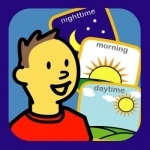
Choiceworks
Education and Medical
App
The Choiceworks app is an essential learning tool for helping children complete daily routines...
BankofMarquis (1832 KP) rated The Predator (2018) in Movies
Sep 26, 2018
Waste of idea, talent and my time
If I was to show future generations a prototypical 1980's "Machismo, Blood and Guts Action Flick", I would pull the original 1987 PREDATOR (starring good ol' Arnold Schwarzenegger) off my dusty shelves and show this to them. It is a film so "of it's time".
In subsequent years, there have been more films that attempted to use the Predator character - PREDATOR 2 (1990), AVP: ALIENS VS. PREDATOR (2004), ALIENS VS. PREDATOR: REQUIEM (2007) and PREDATORS (2010) - all disappointing. All failing to equal the balance of machismo, action and humor that is needed.
So...it was with great anticipation that I looked forward to THE PREDATOR, a new film written and directed by Shane Black (KISS KISS BANG BANG, IRON MAN 3, THE NICE GUYS) - one of the actors in the 1987 flick!
And...I was disappointed again.
This film fails because it never really got a grip on just what type of film it wanted to be - is it a Sci-Fi film? Is it an Action film? A buddy flick? A gore fest? A look at Autism? Black's script and direction spreads all these items out on the picnic blanket that is this film and then intermittently picks each one of these up to show us - sometimes a couple of them - like a kid trying to decide whether he wants the chips or the hot dogs or the Oreo cookies and just shoves them all in his mouth together.
And that's too bad, for Black has an interesting premise - rival Predators battling on Earth - with a ragtag group of Earthlings thrown in the middle - and what a "ragtag" group they are! Trevante Rhodes (MOONLIGHTING), Thomas Jane (THE MIST), Keegan-Michael Key (KEY & PEELE), Alfie Allen (GAME OF THRONES) and Augusto Aguilera (CHASING LIFE) make an intriguing band of misfit soldiers that easily could have been an equal to Arnold's ragtag group of soldiers from the 1987 original.
Unfortunately, they are the "back-up band" to the boring Boyd Holbrook (NARCOS) and Olivia Munn (X-MEN: APOCALYPSE) as a couple thrown together to defend Holbrook's Autistic son (Jacob Tremblay - so good in ROOM and wasted here) in a by-the-book "they hate each other when they first meet, so - naturally - they'll fall in love by the end" plot contrivance that doesn't work at all.
Add on top of that Sterling K. Brown (THIS IS US) as a "mysterious" Gov't Agent who is so much of a bad guy, all he was missing was a mustache twirl and the missed opportunities of actors such as Yvonne Stahovski (THE HANDMAID'S TALE) and NIall Matter (EUREKA) who both just stand around and do nothing. They even cast Jake Busey (Gary's kid) - who would be the perfect "over-the-top" bad guy for this sort of film, but...he is just misdirection and wasted as well.
What a wasted effort, a wasted opportunity and a waste of my time.
Letter Grade C_+: The ragtag group of soldiers were at least fun to watch (give Thomas Jane and Keegan-Michael Key their own "buddy" picture)!
5 stars (out of 10) - and you can take that to the BankofMarquis
In subsequent years, there have been more films that attempted to use the Predator character - PREDATOR 2 (1990), AVP: ALIENS VS. PREDATOR (2004), ALIENS VS. PREDATOR: REQUIEM (2007) and PREDATORS (2010) - all disappointing. All failing to equal the balance of machismo, action and humor that is needed.
So...it was with great anticipation that I looked forward to THE PREDATOR, a new film written and directed by Shane Black (KISS KISS BANG BANG, IRON MAN 3, THE NICE GUYS) - one of the actors in the 1987 flick!
And...I was disappointed again.
This film fails because it never really got a grip on just what type of film it wanted to be - is it a Sci-Fi film? Is it an Action film? A buddy flick? A gore fest? A look at Autism? Black's script and direction spreads all these items out on the picnic blanket that is this film and then intermittently picks each one of these up to show us - sometimes a couple of them - like a kid trying to decide whether he wants the chips or the hot dogs or the Oreo cookies and just shoves them all in his mouth together.
And that's too bad, for Black has an interesting premise - rival Predators battling on Earth - with a ragtag group of Earthlings thrown in the middle - and what a "ragtag" group they are! Trevante Rhodes (MOONLIGHTING), Thomas Jane (THE MIST), Keegan-Michael Key (KEY & PEELE), Alfie Allen (GAME OF THRONES) and Augusto Aguilera (CHASING LIFE) make an intriguing band of misfit soldiers that easily could have been an equal to Arnold's ragtag group of soldiers from the 1987 original.
Unfortunately, they are the "back-up band" to the boring Boyd Holbrook (NARCOS) and Olivia Munn (X-MEN: APOCALYPSE) as a couple thrown together to defend Holbrook's Autistic son (Jacob Tremblay - so good in ROOM and wasted here) in a by-the-book "they hate each other when they first meet, so - naturally - they'll fall in love by the end" plot contrivance that doesn't work at all.
Add on top of that Sterling K. Brown (THIS IS US) as a "mysterious" Gov't Agent who is so much of a bad guy, all he was missing was a mustache twirl and the missed opportunities of actors such as Yvonne Stahovski (THE HANDMAID'S TALE) and NIall Matter (EUREKA) who both just stand around and do nothing. They even cast Jake Busey (Gary's kid) - who would be the perfect "over-the-top" bad guy for this sort of film, but...he is just misdirection and wasted as well.
What a wasted effort, a wasted opportunity and a waste of my time.
Letter Grade C_+: The ragtag group of soldiers were at least fun to watch (give Thomas Jane and Keegan-Michael Key their own "buddy" picture)!
5 stars (out of 10) - and you can take that to the BankofMarquis
Gareth von Kallenbach (980 KP) rated Max Payne (2008) in Movies
Aug 14, 2019
Against the gritty, snow covered, and crime ridden streets of New York, one man is waging a battle for redemption and revenge. The man in Detective Max Payne (Mark Wahlberg), and following the murder of his wife and infant son, Payne has seen his life and career spin down an ever deepening black hole to the point where he is relegated to a basement office working on cold cases.
Max has become a creature of the night, and spends his off hours patrolling the grimy sections of the city looking for clues about the death of his wife and taking on all manner of the cities criminal elements to get to the truth which has so long eluded him.
While attempting to gain information from a former snitch, Max is introduced to the Natasha Sax (Olga Kurylenko), and her sister Mona (Mila Kunis). The fact that Mona is suspicious of Max from the start is of little concern to Natasha who follows Max back to his apartment and attempts to seduce him. Max quickly spurns her advances which causes Natasha to leave his apartment angry and unbeknownst to Max, steals his wallet in the process. Shortly after leaving Max’s apartment, Natasha is brutally murdered and when Max’s wallet is found at the scene, he becomes the lead suspect in the murder.
Soon after learning from his former partner that Natasha’s dead may be linked to the death of Max’s wife, Max becomes the subject of a city wide manhunt when his partner turns up dead which is attributed to Max going over the edge.
In a race against time, Max must get to the bottom of the deaths as well as solve his family’s murder and clear his good name. This will not be easy as Max must face the resources of a gigantic corporation as well as a crazed drug lord, and his colleagues on the police force.
Based on the popular video games series from Remedy Entertainment and 3D Realms, Max Payne takes some of the games more prominent characters and themes and creates a new storyline. The bullet time ability that Max had in the game has been omitted and replaced with a few gun battles that are shot at times in slow motion, such as a well staged battle in an office building.
While the storyline and character development may be lacking, the film does a decent job of capturing the look and tone of the games, and Wahlberg is solid as the tormented lead character.
Backed by a solid supporting cast which includes Beau Bridges, Chris O’Donnell, and Ludacris, “Max Payne” is an enjoyable if flawed movie experience that makes up for its shortcomings with solid visuals and some great gun battles that come late in the film.
The picture and sound quality of the movie are very crisp and if you have the chance to enjoy the film in surround sound and HDTV I would highly suggest it.
The bonus features are very good and there is a great graphic book feature that delves more into the character of Max Payne’s wife and the events leading up to her murder.
Max has become a creature of the night, and spends his off hours patrolling the grimy sections of the city looking for clues about the death of his wife and taking on all manner of the cities criminal elements to get to the truth which has so long eluded him.
While attempting to gain information from a former snitch, Max is introduced to the Natasha Sax (Olga Kurylenko), and her sister Mona (Mila Kunis). The fact that Mona is suspicious of Max from the start is of little concern to Natasha who follows Max back to his apartment and attempts to seduce him. Max quickly spurns her advances which causes Natasha to leave his apartment angry and unbeknownst to Max, steals his wallet in the process. Shortly after leaving Max’s apartment, Natasha is brutally murdered and when Max’s wallet is found at the scene, he becomes the lead suspect in the murder.
Soon after learning from his former partner that Natasha’s dead may be linked to the death of Max’s wife, Max becomes the subject of a city wide manhunt when his partner turns up dead which is attributed to Max going over the edge.
In a race against time, Max must get to the bottom of the deaths as well as solve his family’s murder and clear his good name. This will not be easy as Max must face the resources of a gigantic corporation as well as a crazed drug lord, and his colleagues on the police force.
Based on the popular video games series from Remedy Entertainment and 3D Realms, Max Payne takes some of the games more prominent characters and themes and creates a new storyline. The bullet time ability that Max had in the game has been omitted and replaced with a few gun battles that are shot at times in slow motion, such as a well staged battle in an office building.
While the storyline and character development may be lacking, the film does a decent job of capturing the look and tone of the games, and Wahlberg is solid as the tormented lead character.
Backed by a solid supporting cast which includes Beau Bridges, Chris O’Donnell, and Ludacris, “Max Payne” is an enjoyable if flawed movie experience that makes up for its shortcomings with solid visuals and some great gun battles that come late in the film.
The picture and sound quality of the movie are very crisp and if you have the chance to enjoy the film in surround sound and HDTV I would highly suggest it.
The bonus features are very good and there is a great graphic book feature that delves more into the character of Max Payne’s wife and the events leading up to her murder.

Beginning Android 4
Book
Beginning Android 4 is an update to Beginning Android 3, originally written by Mark Murphy. It is...
BankofMarquis (1832 KP) rated GoodFellas (1990) in Movies
Jun 26, 2020
LIKE A FINE WINE - gets better with age
I have to admit, when I first watched GOODFELLAS 30 years ago, I thought it was "good" but not "great".
The years and subsequent viewings of this epic masterpiece has slowly changed my mind.
Directed by one of the finest Directors of all-time, GOODFELLAS is based on the real-life experience of former "Wiseguy" Nicholas Pileggi (from his book) and depicts mob life in New York City in the 1960's and the 1970's.
Scorcese knows this world and it's looks & feels and you can sense that world while watching this movie. Whether it's the clothing, the set decorations, the vocal inflections or the music choices, Scorcese meticulously blends all of the minutiae of these eras and these people extremely effectively to draw a vivid picture of people - and gangsters - of another era.
It helps tremendously that he has an "A" cast to inherit the characters. Robert DeNiro shows his ferocious personae as a "force to be reckoned with" as legendary (their word) mobster Jimmy Conway. He has a danger to him that could erupt at any time, but he also has something else - probably even more dangerous - he's smart and wily and will meticulously plan his crimes out. This makes him stand out in a world where most are acting out of impulse. Joe Pesci, rightfully, won the Oscar for Best Supporting Actor for his take on psychopathic gangster Tommy DeVito. What struck me on this viewing of the film was how small a role in this film that Tommy is. Pesci is not on-screen all that much, but for the scenes that he is in, he is incredibly powerful. You can see that Tommy is dangerous and needs to be handled with "kit gloves".
Scorcese took a chance by centering this film on an unknown actor on who's shoulders that this film will stand or fall - and he chose wisely - for Ray Liotta's performance as Henry Hill is fascinating to watch. He has a charisma and charm to him that draws you in, but there is also an air about him that repels you away at the same time. Scorcese cast another unknown, Lorraine Bracco as Henry's wife, Karen Hill, who is drawn towards the power and danger of Henry (and his world). Bracco was nominated for an Oscar and Liotta never came close to this level of performance for the rest of his career.
Credit, therefore, must be given to the Directorial job that Scorcese put in on this film. This is his masterpiece (despite what the Oscars say). Years from now when scholars look back on his career, this (along with Raging Bull) will be the films that are shown (not THE DEPARTED - the film that he, finally, won his Oscar for).
I find more and more nuance and richness to this film upon subsequent re-watches, and I drank those in on this viewing. GOODFELLAS is like a fine wine, it gets better with age.
Letter Grade: A
9 stars out of 10 (and you can take that to the Bank(OfMarquis)
The years and subsequent viewings of this epic masterpiece has slowly changed my mind.
Directed by one of the finest Directors of all-time, GOODFELLAS is based on the real-life experience of former "Wiseguy" Nicholas Pileggi (from his book) and depicts mob life in New York City in the 1960's and the 1970's.
Scorcese knows this world and it's looks & feels and you can sense that world while watching this movie. Whether it's the clothing, the set decorations, the vocal inflections or the music choices, Scorcese meticulously blends all of the minutiae of these eras and these people extremely effectively to draw a vivid picture of people - and gangsters - of another era.
It helps tremendously that he has an "A" cast to inherit the characters. Robert DeNiro shows his ferocious personae as a "force to be reckoned with" as legendary (their word) mobster Jimmy Conway. He has a danger to him that could erupt at any time, but he also has something else - probably even more dangerous - he's smart and wily and will meticulously plan his crimes out. This makes him stand out in a world where most are acting out of impulse. Joe Pesci, rightfully, won the Oscar for Best Supporting Actor for his take on psychopathic gangster Tommy DeVito. What struck me on this viewing of the film was how small a role in this film that Tommy is. Pesci is not on-screen all that much, but for the scenes that he is in, he is incredibly powerful. You can see that Tommy is dangerous and needs to be handled with "kit gloves".
Scorcese took a chance by centering this film on an unknown actor on who's shoulders that this film will stand or fall - and he chose wisely - for Ray Liotta's performance as Henry Hill is fascinating to watch. He has a charisma and charm to him that draws you in, but there is also an air about him that repels you away at the same time. Scorcese cast another unknown, Lorraine Bracco as Henry's wife, Karen Hill, who is drawn towards the power and danger of Henry (and his world). Bracco was nominated for an Oscar and Liotta never came close to this level of performance for the rest of his career.
Credit, therefore, must be given to the Directorial job that Scorcese put in on this film. This is his masterpiece (despite what the Oscars say). Years from now when scholars look back on his career, this (along with Raging Bull) will be the films that are shown (not THE DEPARTED - the film that he, finally, won his Oscar for).
I find more and more nuance and richness to this film upon subsequent re-watches, and I drank those in on this viewing. GOODFELLAS is like a fine wine, it gets better with age.
Letter Grade: A
9 stars out of 10 (and you can take that to the Bank(OfMarquis)
BankofMarquis (1832 KP) rated 21 Bridges (2019) in Movies
Sep 22, 2020
Direction and Lead Performances elevate a "so-so" script
The world lost a tremendous talent when 44 year old Chadwick Boseman lost his battle with cancer. Whether it was as Jackie Robinson in 42, Thurgood Marshall in THURGOOD or as T'Challa/Black Panther in the Marvel movies, Boseman's charm and charisma lept off the screen and drew you into whatever project he is in.
This charm and charisma is very much in evidence in the by-the-book cops chasing robbers action flick 21 BRIDGES. As the cop chasing "the fugitive", Boseman elevates the proceedings to a level above what this average script had to offer.
Set in NYC, 21 BRIDGES tells the tale of Detective Andre Davis (Bozeman) who must chase down a couple of thieves - and cop killers - before they can escape New York. Told in one night, Davis makes the call to close the "21 Bridges" of the island of Manhattan so the bad guys are stuck on the island.
And...that's the first disappointment with this film, it doesn't do anything with that premise. Do the bad guys try to escape on one of those "21 Bridges"? Nope. The bridges are never really mentioned again...so why call this film "21 Bridges"?
What does work is Boseman's performance. His Davis is competent, honest, smart and earnest and you are drawn into his work. As is the work of the person who is thrust into the action as his partner, Vice Cop Frankie Burns (Sienna Miller). You might roll your eyes when you hear Miller's name for her early career was more about being on the tabloid pages than it was about being on the screen, but she has morphed herself - and her career - into something quite interesting through turns in films like FOXCATCHER and AMERICAN SNIPER and she is as equally interesting as Bozeman in this film. The 2 make a good pair.
The rest of the supporting cast - Taylor Kitsch, Keith David and the great J.K. Simmons - are solid, if not spectacular. But there are 2 standouts. Alexander Siddig (Dr. Bashir in STAR TREK: DEEP SPACE 9) is interesting as the "money launderer" and Stephan James (IF BEALE STREET COULD TALK) is just as charming and charismatic as Bozeman as one of the the thieves on the run. If you are looking for a young, charismatic actor to fill the hole created by Bozeman's death, James could very well fit the bill.
I've mentioned that the script by Adam Mervis and Matthew Michael Carnahan is nothing special, but what is special is the Direction by Brian Kirk (a TV Director of such shows as GAME OF THRONES and LUTHER). This is his Major Motion Picture debut (as far as I could tell) and there were some VERY interesting shots and some taught, tense moments. He'll be a director to watch in the future.
While nothing too special, 21 BRIDGES is better than "good enough" - a cops 'n robbers film that will hold your interest for the relatively quick 1 hour and 39 minute running time.
Letter Grade: B
7 Stars (out of 10) and you can take that to the Bank(ofMarquis)
This charm and charisma is very much in evidence in the by-the-book cops chasing robbers action flick 21 BRIDGES. As the cop chasing "the fugitive", Boseman elevates the proceedings to a level above what this average script had to offer.
Set in NYC, 21 BRIDGES tells the tale of Detective Andre Davis (Bozeman) who must chase down a couple of thieves - and cop killers - before they can escape New York. Told in one night, Davis makes the call to close the "21 Bridges" of the island of Manhattan so the bad guys are stuck on the island.
And...that's the first disappointment with this film, it doesn't do anything with that premise. Do the bad guys try to escape on one of those "21 Bridges"? Nope. The bridges are never really mentioned again...so why call this film "21 Bridges"?
What does work is Boseman's performance. His Davis is competent, honest, smart and earnest and you are drawn into his work. As is the work of the person who is thrust into the action as his partner, Vice Cop Frankie Burns (Sienna Miller). You might roll your eyes when you hear Miller's name for her early career was more about being on the tabloid pages than it was about being on the screen, but she has morphed herself - and her career - into something quite interesting through turns in films like FOXCATCHER and AMERICAN SNIPER and she is as equally interesting as Bozeman in this film. The 2 make a good pair.
The rest of the supporting cast - Taylor Kitsch, Keith David and the great J.K. Simmons - are solid, if not spectacular. But there are 2 standouts. Alexander Siddig (Dr. Bashir in STAR TREK: DEEP SPACE 9) is interesting as the "money launderer" and Stephan James (IF BEALE STREET COULD TALK) is just as charming and charismatic as Bozeman as one of the the thieves on the run. If you are looking for a young, charismatic actor to fill the hole created by Bozeman's death, James could very well fit the bill.
I've mentioned that the script by Adam Mervis and Matthew Michael Carnahan is nothing special, but what is special is the Direction by Brian Kirk (a TV Director of such shows as GAME OF THRONES and LUTHER). This is his Major Motion Picture debut (as far as I could tell) and there were some VERY interesting shots and some taught, tense moments. He'll be a director to watch in the future.
While nothing too special, 21 BRIDGES is better than "good enough" - a cops 'n robbers film that will hold your interest for the relatively quick 1 hour and 39 minute running time.
Letter Grade: B
7 Stars (out of 10) and you can take that to the Bank(ofMarquis)
